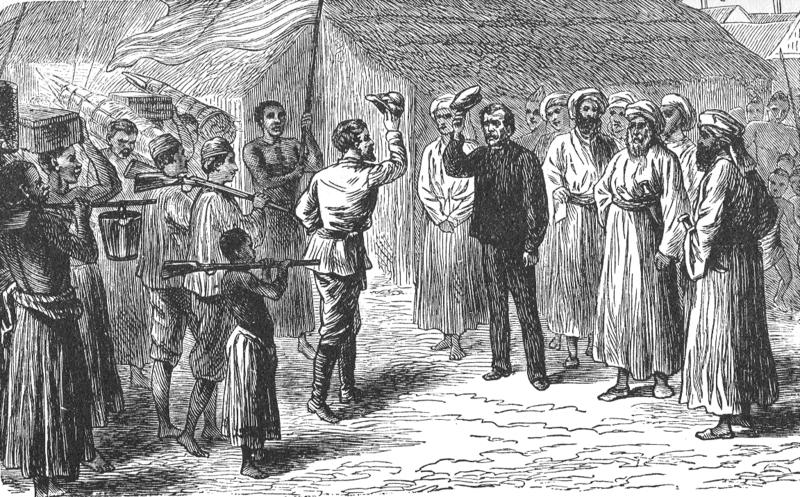
Henry Stanley meeting David Livingstone in 1871
On November 10, 1871, British Africa explorer Henry M. Stanley found his missing colleague David Livingstone in Ujiji on the shores of Lake Tanganyika, who got lost because his obsession to discover the sources of the Nile in central Africa.
“People talk of the sacrifice I have made in spending so much of my life in Africa. Can that be called a sacrifice which is simply paid back as a small part of a great debt owing to our God, which we can never repay?” – David Livingstone
David Livingstone Background
David Livingstone grew up in a very religious home. Next to his studies, the young Livingstone explored the nature areas around his home town and began working at a cotton mill at the age of ten. When he was about nineteen, Livingstone read about the stories of missionary Karl Gützlaff, which inspired him to enroll at a medical school. After that, he applied to join the London Missionary Society and later on hoped to be sent to Southern Africa. Between 1852 and 1856, Livingstone began exploring Africa heading north. In this period, he was the very first officially known European to see the Mosi-oa-Tunya, which were renamed Victoria Falls after Queen Victoria.
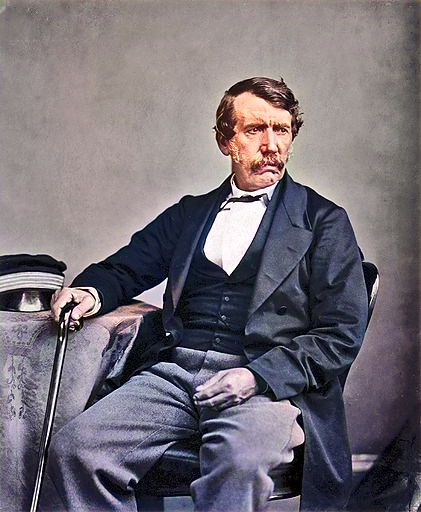
David Livingstone (1813 – 1873)
Exploring Africa
During these travels, David Livingstone was one of the first Europeans to achieve a transcontinental journey across Africa. It is assumed that he was so successful, because he did not seem to be a threat to the African natives. The missionary used to travel lightly in contrast to other explorers who sometimes took a whole army with them. Those were often mistaken for slave-raiders. During the journeys, Livingstone used to indeed preach Christian messages but never forced it to the ones who did not want to and he was good at negotiating with local chiefs wherefore he was often offered aid or shelter. When he returned to England, Livingstone resigned as a missionary and extended his fight against slavery, distributing his ideas and experiences gathered during his travels. The many published works resulting from his journey made him famous and he became Her Majesty’s Consul for the African East Coast.
The next exhibition’s goal was to examine southeastern Africa’s natural resources up to the River Zambezi. On this expedition, the things went by not as smooth as on earlier travels even though they were the first to reach Lake Malawi. The crew contributed a big collection of botanic, ecological, and ethnographic material to Britain, still the media considered the whole expedition as a failure which made it hard to gather money for further expeditions.
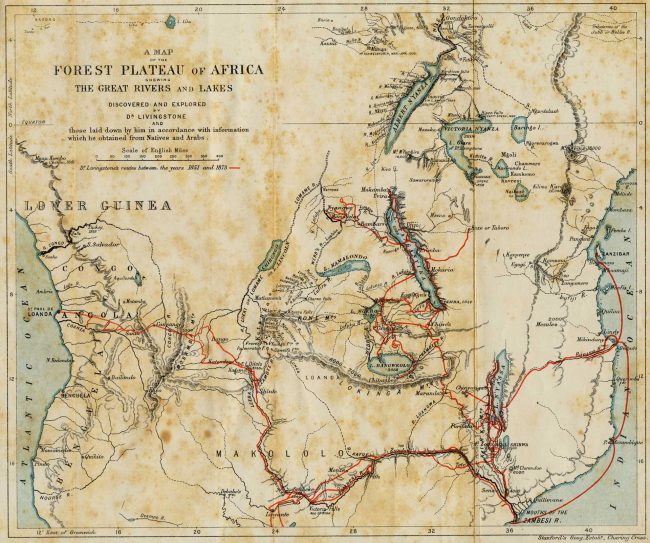
The journeys of Livingstone in Africa between 1851 and 1873
In Search for the Source of River Nile
Livingstone‘s famous expedition to the River Nile started in 1866 in Zanzibar. Before him, Richard Francis Burton,[4] John Hanning Speke [5] and many others attempted to find the source of the river. Most of them suspected the river’s source to be Lake Victoria or Lake Albert (which was partially right) but Livingstone assumed the source to be farther in the south. By August, Livingstone reached Lake Malawi, but most of his supplies and medical equipment was stolen. He was the first European to see Lake Bangweulu, but his health declined more and more. As if this was not enough, Livingstone became a witness of 400 Africans to be massacred by slavers, which shocked him so much, that he was incapable to traveling any further. He traveled to Ujiji, where he arrived in October, 1871.
Lost in Afrtica
For six years, David Livingstone had now lost contact with the world outside Africa and was very ill for most of the time. The New York Herald newspaper sent Henry Morton Stanley to find the lost explorer. When he found him in Ujiji in 1871, he is said to have asked the famous question “Dr. Livingstone, I presume?“. Stanley attempted to take Livingstone home, but the explorer who had judgement difficulties and was still very ill insisted on completing his mission. Unfortunately, he failed to find the source of the Nile River. David Livingstone passed away in 1873, suffering from malaria in the area southeast of Lake Bangweulu.
The Many Sources of the Nile
The Nile has two source rivers: the shorter but more water-rich Blue Nile and the much longer White Nile. The Blue Nile drains large parts of the high precipitation highlands of Abyssinia. Its headwaters gather in the large Lake Tanasee. The Portuguese Jesuit missionary Father Pedro Páez (1564-1622) discovered the source of the Blue Nile in 1613. The Scottish African explorer James Bruce (1730-1794) rediscovered the spring on 4 November 1770 and claimed the fame (in vain) for himself. The White Nile is mostly regarded as actual Nile despite lower water supply. It has more than five times the catchment area of the Blue Nile. The White Nile is formed in the high hills of Burundi, Rwanda and Tanzania from the Burundi source river Luvironza-Ruvuvu and the Rwandan source river Rukarara-Nyabarongo, which flow into the Kagera (in the upper reaches also Akagera). The source of the Kagera-Nile at the Luvironza, which corresponds to the most remote source of the Nile, was discovered jointly by Oskar Baumann and Oskar Lenz in 1893, but was not precisely determined. In 1898 Richard Kandt discovered the Rukarara spring in the Nyungwe forest. It was not until 1937 that the geographical location of the Luvironza spring was precisely determined by Burkhart Waldecker (1902-1964).
Henry Morton Stanley Part 1 – The Greatest Journalist of All Time [12]
References and Further Reading:
- [1] Livingstone Online – Explore the manuscripts of David Livingstone
- [2] David Livingstone.”The Last Journals of David Livingstone, in Central Africa, from 1865 to His Death“
- [3] Livingstone at Britannica Online
- [4] The Adventures of Sir Richard Francis Burton, SciHi Blog
- [5] John Hanning Speke and the Source of the Nile, SciHi Blog, September 15, 2016
- [6] Mary Jobe Akeley and her Explorations in Africa, SciHi Blog, July 19, 2017
- [7] Gustav Nachtigal and the Explorations in Africa, SciHi Blog, February 23, 2017
- [8] Jeanne Baret – An Intrepid Woman of Discovery, SciHi Blog
- [9] Jean-François de La Pérouse and his Voyage around the World, SciHi Blog
- [10] James Cook and the Great Barrier Reef, SciHi Blog
- [11] David Livingstone at Wikidata
- [12] Henry Morton Stanley Part 1 – The Greatest Journalist of All Time , Frontline Fellowship @ youtube
- [13] Blaikie, William Garden (1880). The Personal Life of David Livingstone… Chiefly from His Unpublished Journals and Correspondence in the Possession of His Family. London: John Murray
- [14] Timeline of Explorers in Africa via DBpedia and Wikidata



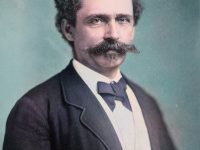
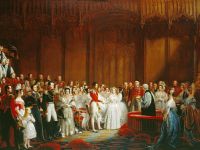

Pingback: Whewell’s Gazette: Year 2, Vol. #18 | Whewell's Ghost